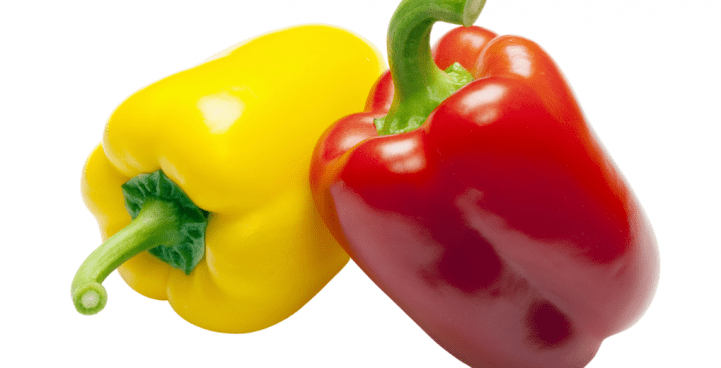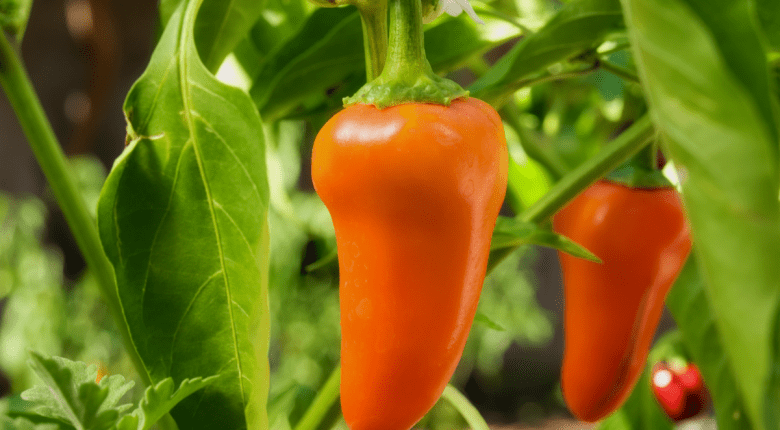The Ultimate Guide to Peppers: Uncovering the Nutritional Value of Calories and Vitamins
Discover the Versatile Nutritional Value of Peppers: Red, Orange, Yellow, or Green, They Conquer the Globe and Delight UK Cuisine. From sweet to hot, fresh and crunchy, to paprika powder, Peppers come in various shapes and varieties. But what makes them so popular? We’ll tell you all you need to know about nutritious and juicy vegetables, and how to keep them fresh for longer.
The name “pepper” comes from the vegetable’s piquancy, which is similar to that of black pepper (peppercorns), although the two plants are not related.
Exploring the Nightshade Family: Peppers and Their Delicious Global History

Discover the fascinating world of Peppers: Belonging to the Nightshade Family, just like eggplants, potatoes and tomatoes. What We Find in the UK Shops are the Fruits of the Sweet Pepper Plant. Both bell peppers and Chilli Peppers are members of the Genus Capsicum, which originated in South America and were cultivated as a Crop Since 7000 BC. Today, these delicious vegetables are cultivated Worldwide and are a favourite ingredient in Asian and South American cuisines.
Peppers – low in calories, high in nutrients to boost your health
Nutritious and Low in Calories: Discover the Health Benefits of These Delicious Vegetables
Find out the health benefits of peppers: low in calories, rich in vitamins and fibre. Depending on the colour, peppers contain between 20 and 37 kcal per 100g, mainly consisting of water with higher carbohydrate content in the sweeter red and yellow varieties. Peppers are packed with both soluble and insoluble dietary fibre, beneficial for the digestive tract and satiety. Plus, they are a great source of antioxidant carotenoids – provitamin a – which give them their vibrant colour. Just 100g of peppers covers your daily carotenoid requirement.
Quick info on calories, vitamins and the nutritional value of peppers
- Peppers contain lots of vitamin C
- The vitamin C content is highest in red peppers
- One pepper is enough to cover your daily requirement
- Vitamin C is broken down by heat, so you get more of it if you eat the peppers raw
- Vitamin C helps the body absorb iron from plants
For vegetarians and vegans: It’s best to eat raw or briefly heated bell peppers to get the most out of iron-rich foods like lentils
How to store peppers for maximum freshness and crispness?
Peppers should be kept cool and dry in order to stay crisp and juicy. At room temperature, they’ll only stay crunchy for four days at the most, but in a dark, cool cellar, they’ll be good for up to two weeks. In the EasyFresh safe of your Liebherr freestanding refrigerator, they’ll stay fresh for up to 10 days. It’s best to store peppers whole – once they’ve been cut, they’ll dry out more quickly as the surface area which is cut and therefore exposed is larger and the water evaporates faster. In addition, the vitamin C content in cut peppers decreases as the vitamin oxidises through contact with the air.
Preserving sliced peppers
Preserving peppers by pickling them with vinegar, sugar, and spices can give them a sweet and sour flavor while prolonging their shelf life. Roasted peppers that are preserved in oil can also serve as a tasty summer side dish or an ingredient for stews. However, it is important to ensure that the jars are sterilized before use. You can sterilize the jars either before filling them or after filling them by placing them in a water bath or the oven. 
Freezing peppers
Is it possible to freeze peppers? Yes, peppers are very good for freezing. It makes it easier to use them at anytime to boost your health. After washing and chopping them, you can freeze peppers in your Liebherr fully integrated freezer with NoFrost, where they will keep fresh for about six months. You can cut the peppers to any size you want as hardly any vitamin C is lost at these cold temperatures. Because vitamins are, however, lost during cooking, it’s best to freeze peppers raw. This way, you can eat the crunchy vegetables throughout the winter and benefit from the vitamins!
Also, find out how to freeze baby food.
Hotness of peppers
Did you know that peppers undergo a color transformation from green to red as they ripen on the plant? This means that green peppers are simply picked earlier. However, if you’re wondering about the difference between bell peppers and chilli peppers, it’s mainly the degree of hotness. Capsaicin, a substance that causes the heat in peppers, is responsible for the difference. Chilli peppers contain more capsaicin and are therefore hotter than their milder counterpart, bell peppers.
The Scoville scale classifies the heat of peppers based on their capsaicin content, with bell peppers classified as mild, cascabel or chilli peppers as spicy, jalapeños as medium hot, and cayenne peppers as hot. Capsaicin triggers a feeling of heat and pain on the tongue, but it also causes the release of endorphins or happiness hormones, leading to the so-called “chilli high.”
If you love spicy food, don’t worry! The more you eat it, the more your body becomes accustomed to it. So why not try some chilli peppers today and see if you can handle the heat? For more information on peppers and their heat levels, visit our website.
Effects of peppers on digestion and allergy risks
Some people who suffer from hay fever experience indigestion when they eat peppers. The two factors are closely linked, because people who are allergic to birch pollen are often allergic to peppers as well. In addition, the relatively tough skin can upset digestion. Try peeling the peppers before eating them. This works best if you hot roast them and then put them in a sealed container. After a short while, the skin can easily be peeled off.